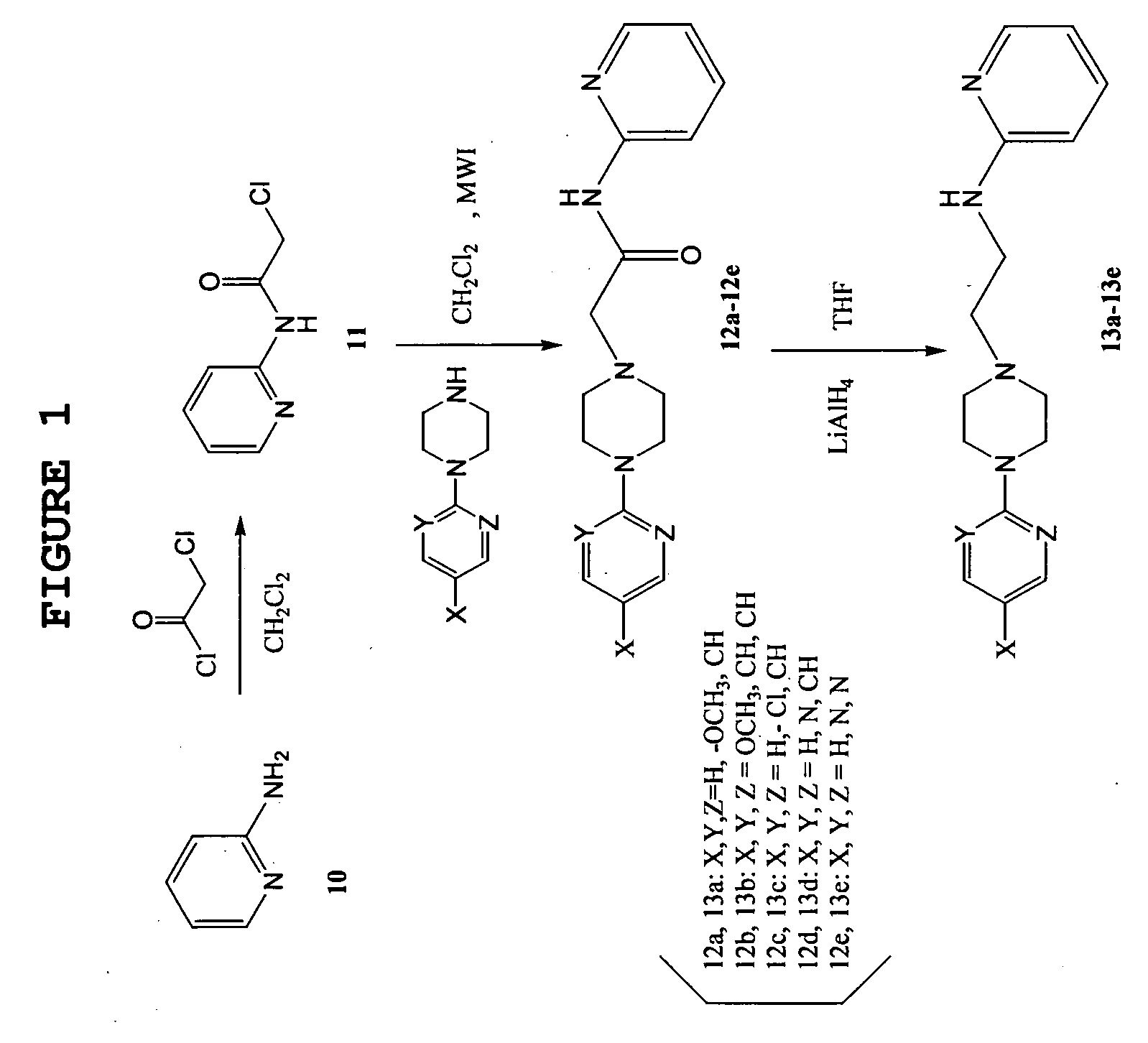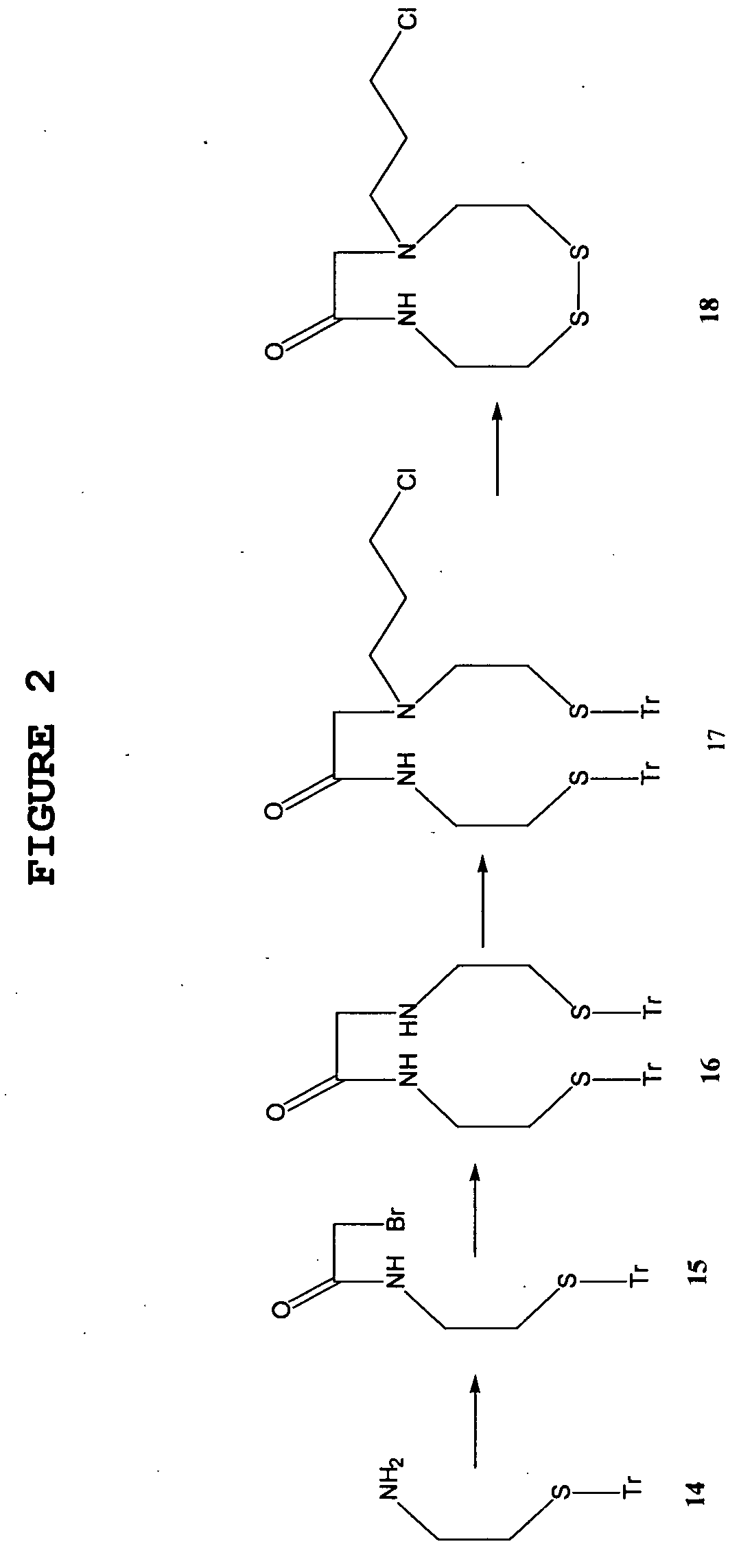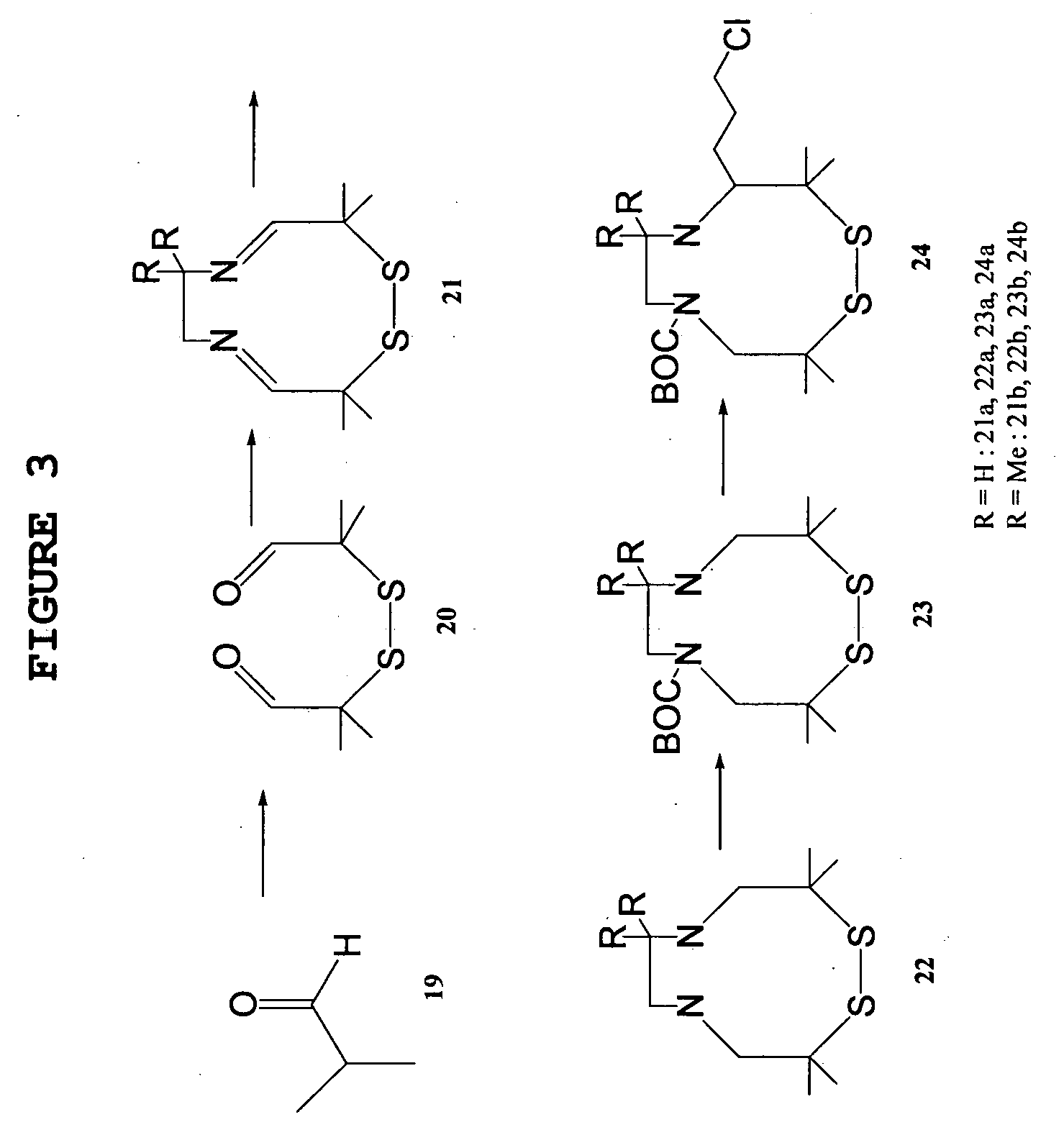Tc-labeled arylpiperazine derivatives for imaging serotonin receptor
- Summary
- Abstract
- Description
- Claims
- Application Information
AI Technical Summary
Benefits of technology
Problems solved by technology
Method used
Image
Examples
example 1
Synthesis of arylpiperazine Derivative
Synthetic procedure for the preparation of arylpiperazine derivative was schematically shown in FIG. 1.
1) Synthesis of 2-(chloroacetyl)amidopyridine (11)
[0079] 2-aminopyridine (2.8 g, 30 mmol) was dissolved in dichloroethane (25 ml) in a 50 ml-glass vessel and chloroacetyl chloride was added dropwise thereto.
[0080] The glass vessel was capped with a TFM teflon cover and placed in a rotor in a microwave reactor. The mixture was irradiated by microwave at 300 W and 80° C., for 5 min. After irradiating for 5 min., the reaction mixture was adjusted to pH9 with a saturated aqueous solution of sodium hydroxide and extracted twice with dichloroethane.
[0081] The organic layer was dried over anhydrous sodium sulfate. The solvent was removed by using a rotary evaporator and the desired pink solid product of 4.9 g (97%) was obtained by recrystallization with acetonitrile.
[0082] mp 110-115° C.;
[0083] IR (KBr) 3443, 3226, 1683, 1581, 1330, 1198, 775 ...
example 2
Synthesis of Chelating Ligand
1) Synthesis of 3-chloropropyl-MAMA-disulfide
[0171] A scheme for the preparation of 3-chloropropyl-MAMA-disulfide was schematically shown in FIG. 2.
1-a) Synthesis of S-triphenylmethyl-cysteamine (14)
[0172] Cysteamine hydrochloride (5 g, 43 mmol) was dissolved in trifluoroacetic acid (50 ml) at room temperature. Triphenylmethanol (11.5 g, 43 mol) was added in portions to the reaction mixture and the reaction mixture was subsequently stirred at room temperature for 1 hr.
[0173] The reaction mixture was evaporated under reduced pressure and dark orange oil was obtained.
[0174] After addition of hexane (3×100 ml), evaporation was repeated three times to remove traces of trifluoroacetic acid. The residual oil was dispersed in a mixture of water (100 ml) and ethyl acetate (100 ml), and the mixture was neutralized with 10% NaHCO3 solution.
[0175] The organic phase was separated, dried over anhydrous magnesium sulfate, and concentrated under reduced pressure...
example 3
Synthesis of
8-[3-({2-[4-(2-methoxy-phenyl)-piperazine-1-yl]-ethyl}-pyridin-2-yl-amino)-propyl]-[1,2,5,8]dithiadiazecan-6-one (1)
[0242] Scheme for the preparation thereof was shown in FIG. 4.
[0243] A solution of 1-(2-methoxyphenyl)-4-(2-(2-pyridylamino)ethyl) piperazine (13) (0.62 g, 0.2 mmol) and 8-(3-chloropropyl)-[1,2,5,8]dithiadiazecan-6-one (2) (0.52 g, 0.2 mmol) dissolved in DMF was added into a 50 ml-glass vessel containing an excess of K2CO3.
[0244] The reaction vessel was capped with a TFM teflon cover and placed in a rotor in a microwave reactor. The mixture was irradiated at 300 W and 130° C., for 30 min., and cooled to room temperature. The resulting mixture was successively evaporated, dissolved in water and extracted twice with dichloromethane.
[0245] The organic layer was washed successively with water and brine, and dried over anhydrous sodium sulfate. The solvent was evaporated and a crude product was obtained.
[0246] The crude product was purified by column chrom...
PUM
 Login to View More
Login to View More Abstract
Description
Claims
Application Information
 Login to View More
Login to View More - R&D
- Intellectual Property
- Life Sciences
- Materials
- Tech Scout
- Unparalleled Data Quality
- Higher Quality Content
- 60% Fewer Hallucinations
Browse by: Latest US Patents, China's latest patents, Technical Efficacy Thesaurus, Application Domain, Technology Topic, Popular Technical Reports.
© 2025 PatSnap. All rights reserved.Legal|Privacy policy|Modern Slavery Act Transparency Statement|Sitemap|About US| Contact US: help@patsnap.com



